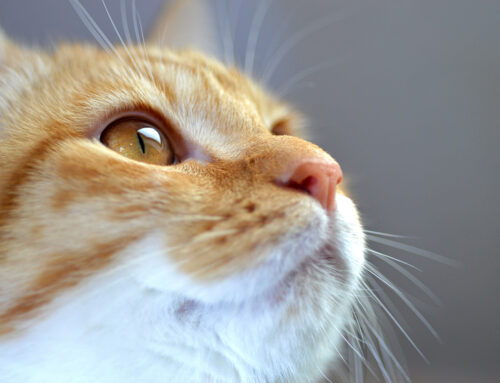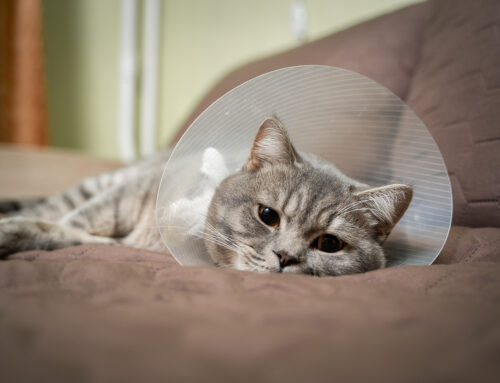Many assume that a pet with toothache will immediately go on hunger strike and will let us know that something is wrong. However, the truth is that most animals will continue to eat their meals as normal, even with advanced dental disease. The reason for this is simple: In the wild, there was no pet dentist and these guys would have had to simply get on with it or risk starvation. Unfortunately for them, dogs and cats have evolved into being masters at hiding their discomfort. Studies have shown that most animals over the age of six will have some degree of dental disease (whether they are showing signs or not). This means that it is up to vets and owners to monitor oral health closely.
An astute owner may notice that their pet is favouring wet over dry food or has breath that is strong smelling. Perhaps they will watch them closely as they eat and notice that they are slower than usual or are dropping food on the ground. However, some individuals are so stoic and brave that they won’t show any symptoms and their dental disease is only ever picked up during their routine annual health check.
Whenever a patient is presented to our clinic for a check-up, we will always have a good look inside their mouth to make sure all is okay. Sometimes, a dental issue is obvious to everyone in the room and as soon as we open the animal’s mouth we are greeted with red, angry gums and teeth that are covered in thick, dark calculus (a form of hardened plaque). Often, the source of the toothache is far less obvious than this and it can take a professional to spot that something is the matter. This is particularly the case with painful dental lesions known as Feline Oral Resorptive Lesions (FORLs) in cats, which can be tricky to spot. An affected tooth will have a portion of gum overgrowing it and will be incredibly painful when touched. Some dental lesions are so subtle that they are only detected when an animal is under sedation and will allow a thorough oral exam and dental X-rays. If a tooth problem is suspected, it may be advised to investigate the issue further while the patient is asleep (and much more cooperative!).
Thankfully, we are able to treat most forms of dental disease quickly and safely by performing dental cleaning and removing any of the teeth that are diseased and/or causing pain. It is necessary to perform these treatments under an anaesthetic to allow a comprehensive assessment and a deep clean. Though it depends on many factors, including genetics and diets, most of our dogs and cats will need at least one dental cleaning during their lifetime.
It is important to note that the vast majority of dental disease can be avoided with appropriate preventative care. For most, this consists of daily tooth brushing with either a pet toothbrush or a finger brush. Specific toothpastes are available which taste like meat or fish and can make the experience more pleasant. Remember, cats are not exempt and while it may initially be a challenge to get them to tolerate the brushing, it can certainly be done. Ideally, the practice of tooth brushing should start from a young age to ensure it is accepted as just part of the normal routine. Our staff will be more than happy to demonstrate the correct procedure for those that are unsure how to brush teeth effectively.
As well as brushing, owners can add products to food and water to aid the break-down of plaque and prevent gingivitis (inflammation of the gums) . On top of this, there are even diets available that have been formulated to delay the onset of dental disease. For animals prone to calculus build-up, dry biscuits that help to crack off the plaque can be hugely beneficial. In dogs, chews and dental sticks do play a role but are often high in calories so should be limited and not overly relied on.
If you are concerned about your little one’s teeth or feel that they are overdue a check-up, call us today to book them in for a quick and easy dental check; you won’t regret it!





